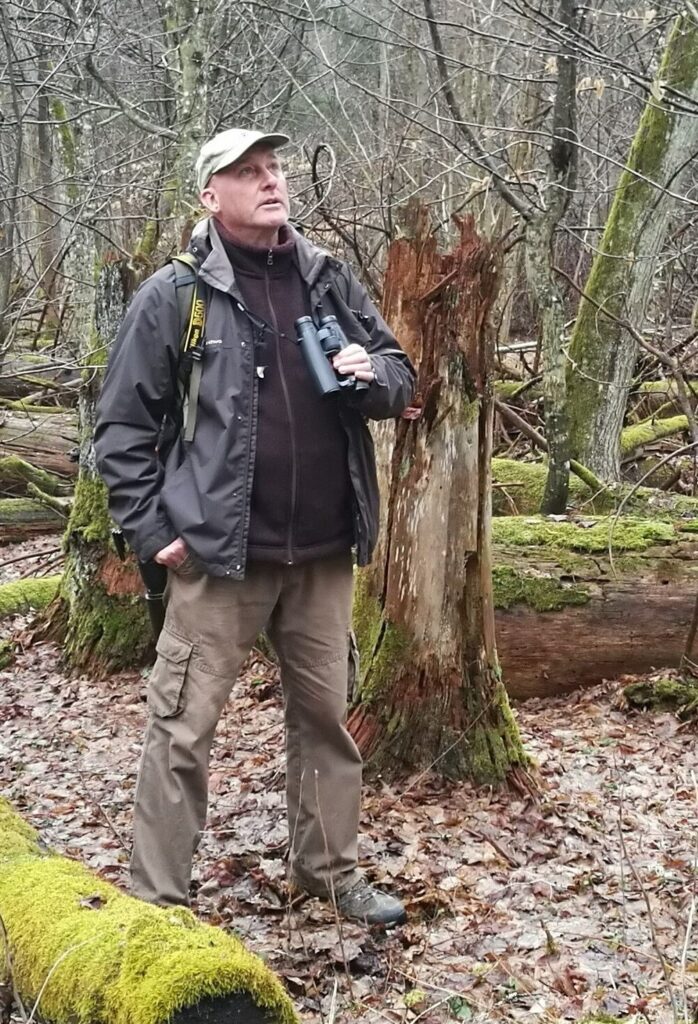
While arranging the review of Europe’s Birds: An Identification Guide, I had the pleasure of interviewing the author, Gerard Gorman. Our conversation is below.
Gerard’s books are available at Amazon
You can learn more at his website: http://www.probirder.com/
Ashworth
What was it that got you involved with birds?
Gorman
That is a tricky one to answer. I have thought about it, and been asked about it before. My father encouraged me, but he was brought up in a very urban area in Liverpool, England. Maybe that is why? I just had it in me, a passion for nature, and maybe he saw that?
Ashworth
How did this lead to woodpeckers?
Gorman
This is another question which is hard to answer. In a nutshell, I don’t know. But, after having been asked it many times (including asking myself) I have come up with this: For some reason I always gravitated towards woodland birds. Sure, I like all birds, appreciate everything, all wildlife, all habitats, but when I had to choose, I went into the woods. And which birds are the quintessential birds of wooded places? I have always preferred walking when birding, rather than sitting around, in a hide (blind), searching for birds, not just scanning through those that are already there, like gulls on a landfill or shorebirds on a beach. I am not at all deriding anyone who prefers that (and I have done it) it is just that I like to walk, listen and search in woods, forests and jungles.
Ashworth
Woodpeckers of the World is amazing! What was involved in putting this volume together? How long did it take?
Gorman
Thank you. It was a lot of work! It took about two years to write it, but most of my life to gain the experience it needed. And when I was writing it, I then had to set off to try and answer some questions that needed answers.
Ashworth
I own three of your monographs: The Black Woodpecker, The Green Woodpecker, and The Wryneck. With the expansive range of the Black Woodpecker, what do you think needs to be done with this species from a research perspective?
Gorman
Nothing from a conservation angle. It is doing well. It has proved to be a fairly adaptable species. For a woodpecker, it’s well known. But behaviour wise, there are always things to learn.
Ashworth
How did the Green Woodpecker get the nickname “Yaffle?”
Gorman
It’s an old English name. A rural folk name. It derives from the bird’s ‘laughing’ call.
Ashworth
Tell us about the subject of your latest book.
Gorman
I’m working on a new book on Green Woodpecker for Pelagic Publishing in the UK. It will be similar in design and format to my book THE WRYNECK which they kindly published earlier this year. It will be more extensive and ‘colourful’, more up-to-date, than the previous one I did on this species.
Ashworth
Where do you think woodpecker research needs to go from here?
Gorman
Habitats. Not so much ‘woodpecker research’ but protecting the world’s forests, the Amazon, of course, but also those in south-east Asia, in Indonesia and the like. Huge problems there, for all the wildlife of forests. And the Taiga forest, from Scandinavia to Siberia, too. Woodpeckers are keystone, umbrella and indicator species, and researching them can help many other species.
Ashworth
Are you still doing birding tours in Europe?
Gorman
Yes, and elsewhere. I guide birding and wildlife tours to earn a living. Searching for, and studying woodpeckers, is my passion, but it is not easy to live from that!
Ashworth
What else would you like readers to know about woodpeckers?
Gorman
How important they are! As I said above, they are keystone, umbrella and indicator species. Hugely important animals in forested habitats. Many are hard to find and when you find them, often not easy to watch. But when you do, they are fascinating, their behaviour is often remarkable. I have found that kids love them, too!
Darrell Ashworth
AFO’s Book Reviews Editor
Header photo by Dave Menke/USFWS
